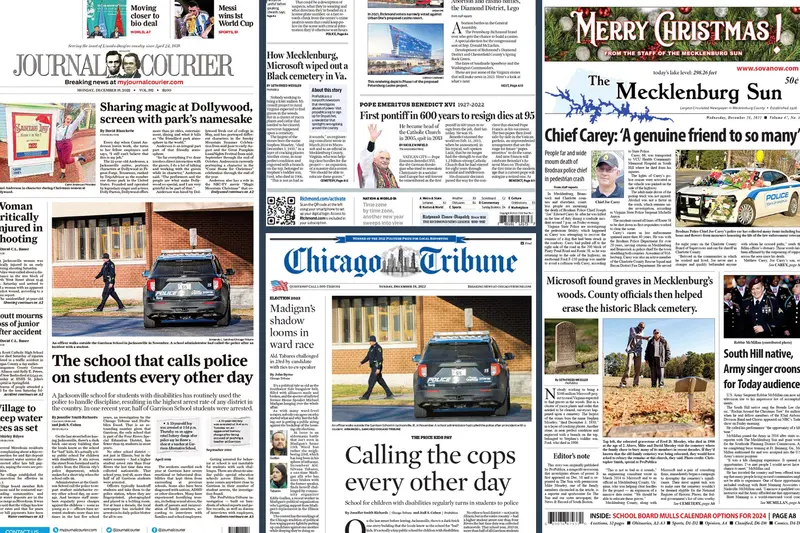About News Articles
Table of ContentsThe smart Trick of News Articles That Nobody is Talking AboutWhat Does News Articles Do?Get This Report on News ArticlesFascination About News ArticlesNews Articles - The Facts
Good understanding of different subjects provides trainees a competitive side over their peers. Despite the fact that digital and social media sites are readily obtainable, we must not forget exactly how essential it is to read the papers. Parents must try and instill the habit of reviewing a newspaper as a day-to-day regimen to proceed the tradition of the adored print medium.News tales likewise have at the very least one of the following vital features family member to the desired target market: distance, importance, timeliness, human rate of interest, anomaly, or consequence.
Within these limitations, information stories additionally intend to be extensive. Amongst the larger and extra highly regarded newspapers, justness and equilibrium is a major variable in presenting information.
Newspapers with a global target market, for instance, often tend to make use of a much more formal design of writing. The certain selections made by an information outlet's editor or content board are often gathered in a style guide; common design guides consist of the and the United States Information Design Publication. The major objectives of news writing can be summed up by the ABCs of journalism: precision, brevity, and clearness.
The Ultimate Guide To News Articles
As a policy, reporters will certainly not use a lengthy word when a brief one will do. They use subject-verb-object construction and dazzling, energetic prose (see Grammar). They supply anecdotes, instances and allegories, and they rarely depend on generalizations or abstract concepts. News authors attempt to prevent using the same word more than once in a paragraph (sometimes called an "echo" or "word mirror").
Headings in some cases leave out the topic (e.g., "Jumps From Watercraft, Catches in Wheel") or verb (e.g., "Feline female fortunate"). A subhead (likewise subhed, sub-headline, subheading, subtitle, deck or dek) can be either a subordinate title under the primary headline, or the heading of a subsection of the article. It is a heading that comes before the primary text, or a group of paragraphs of the major message.

Extra signboards of any of these types may appear later on in the short article (specifically on subsequent web pages) to lure additional reading. Such signboards are also used as tips to the short article in other sections of the publication or site, or as promotions for the item in various other publication or websites. Normal framework with title, lead paragraph (recap in bold), other paragraphs (information) and contact info.

Example of a hard-lead paragraph NASA is recommending one more space project. The firm's budget request, introduced today, included a strategy to send one more objective to the Moon. This time the agency wishes to establish a lasting facility as a jumping-off factor for other room experiences. The spending plan demands roughly $10 billion for the task.
An "off-lead" is the second most vital front page information of the day. To "bury the lead" is to visit site start the short article with history info or details of second value to the visitors, requiring them to check out even more deeply into a write-up than they ought to have to in order to find the essential factors.
Unknown Facts About News Articles
Usual usage is that one or more sentences each form their own paragraph. Journalists typically explain the company or framework of a newspaper article as an upside down pyramid. The important and most fascinating components of a story are placed at the start, with supporting details complying with in order of diminishing relevance.
It allows individuals to check out a topic to only the depth that their curiosity takes them, and without the charge of details or nuances that they might consider unnecessary, but still making that details available to much more interested readers. The inverted pyramid framework also enables articles to be trimmed to any kind of approximate length during design, to fit in the room offered.
Some writers begin their tales with the "1-2-3 lead", yet there are lots of kinds of lead available. This format usually begins with a "5 Ws" opening paragraph get redirected here (as explained above), followed by an indirect quote that offers to support a significant component of the very first paragraph, and afterwards a direct quote to sustain the indirect quote. [] A kicker can describe several things: The last tale current broadcast; a "happy" story to end the show.
Longer write-ups, such as magazine cover posts and the items that lead the inside areas of a newspaper, are recognized as. Feature tales differ from straight information in several means.
What Does News Articles Do?
A function's first paragraphs frequently connect an intriguing moment or event, as in an "anecdotal lead". From the details of an individual or episode, its view swiftly broadens to generalities concerning the tale's topic.

The Editor's Toolbox: A Referral Guide for Beginners and Professionals (2001) Allan M. Siegal and William G. Connolly. The go to this site New York City Times Manual of Design and Usage: The Authorities Style Guide Made Use Of by the Writers and Editors of the Globe's A lot of Reliable Paper (2002) M. L. Stein, Susan Paterno, and R.